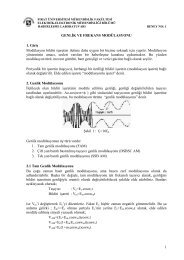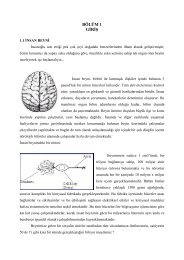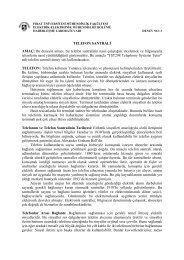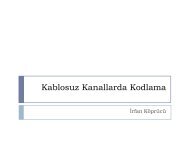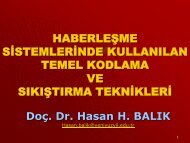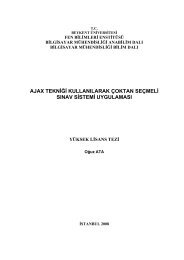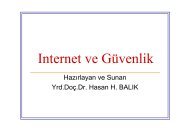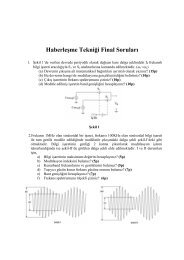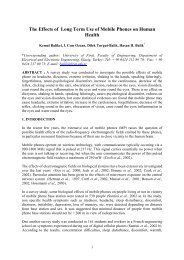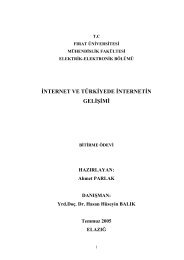beykent üniÌversiÌtesiÌ - Hasan Hüseyin BALIK
beykent üniÌversiÌtesiÌ - Hasan Hüseyin BALIK
beykent üniÌversiÌtesiÌ - Hasan Hüseyin BALIK
You also want an ePaper? Increase the reach of your titles
YUMPU automatically turns print PDFs into web optimized ePapers that Google loves.
e. Amdahls law deals with the potential speedup of a program using multiple processors compared to a single<br />
processor.<br />
f. The Intel 8080 was the world’s first general-purpose microprocessor.<br />
g. A MBR register contains the data to be written into memory or receives the data read from memory.<br />
h. A(n) I/O interrupt is generated by an I/O controller to signal normal completion of an operation, request service<br />
from the processor, or to signal a variety of error conditions.<br />
i. Bus lines can be separated into two generic types: dedicated and multiplexed.<br />
j. The most commonly used physical types of memory are: semiconductor memory, magnetic surface memory<br />
(used for disk and tape), and optical and magneto-optical.<br />
k. External, nonvolatile memory is referred to as secondary or auxiliary memory.<br />
l. One byte equals 8 bits.<br />
m. The simplest of the error-correcting codes is the Hamming code.<br />
n. Three common forms of read-mostly memory are: EPROM, EEPROM, and flash memory.<br />
o. A dynamic RAM is made with cells that store data as charge on capacitors.<br />
p. The floppy disk is a small, flexible platter and the least expensive type of disk.<br />
q. The RAID strategy employs multiple disk drives and distributes data in such a way as to enable simultaneous<br />
access to data from multiple drives, thereby improving I/O performance and allowing easier incremental increases<br />
in capacity.<br />
r. Data is organized on the platter in a concentric set of rings called tracs.<br />
s. In DMA mode the I/O module and main memory exchange data directly, without processor involvement.<br />
t. Interface to the processor and memory via the system bus or central switch and interface to one or more<br />
peripheral devices by tailored data links are two major functions of an I/O Module.<br />
u. When the processor, main memory, and I/O share a common bus, two modes of addressing are possible: memory<br />
mapped and isolated.<br />
v. The Operating System is a program that manages the computer’s resources, provides services for programmers,<br />
and schedules the execution of other programs.<br />
w. The Kernel , or nucleus, contains the most frequently used functions in the OS.<br />
x. Early computer systems presented two main problems: setup time and schedulling.<br />
y. Because a process executes only in main memory, that memory is referred to as real memory.<br />
3. Consider two different machines, with two different instruction sets, both of which have a clock rate of 200 MHz.<br />
The following measurements are recorded on the two machines running a given set of benchmark programs:<br />
Instruction Type Instruction<br />
Count<br />
(millions)<br />
Cycles per<br />
Instruction<br />
Machine A<br />
Arithmetic and logic<br />
Load and store<br />
Branch<br />
Others<br />
Machine B<br />
Arithmetic and logic<br />
Load and store<br />
Branch<br />
Others<br />
8<br />
4<br />
2<br />
4<br />
10<br />
8<br />
2<br />
4<br />
a. Determine the effective CPI, MIPS rate, and execution time for each machine (30p)<br />
b. Comment on the results. (20p)<br />
1<br />
3<br />
4<br />
3<br />
1<br />
2<br />
4<br />
3



